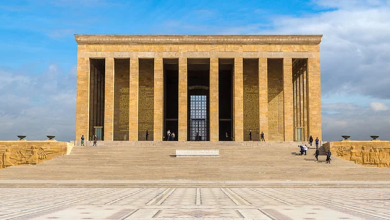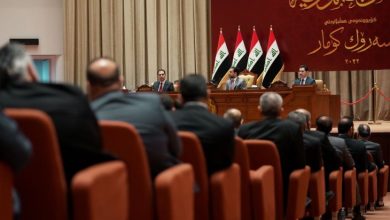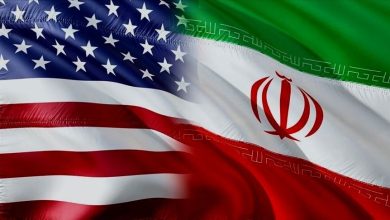Mass Mobilization Campaigns in China

From past to present, a lot of governments or states have actualized some movements in terms of education, economy, and culture that are able to influence the community in the direction of governments’ wishes. States want their citizens to behave how they want. They do not ask their people to rebel against their policies and thoughts. These thoughts and policies want to be imposed on people to be able to be established an etatisme whose core is strengthened and continued its stability throughout the years. Of course, not all of these movements which can be made by the government aim to educate people or similar things. Some of them want to increase welfare within the country. They want to prevent corruption and create a more justice environment. If we have to determine a country that has these movements that are called a campaign by using these pieces of knowledge, China can be a well-known example for us. One of the most important things is that why Chinese leaders wanted to actualize these campaigns and what kind of regulations did they provide? In China, there are three different campaigns that have left mark on the people. One of them is the Maoist Campaign. In this campaign, the Chinese Communist Party wants to plan a campaign to provide the support that has to come from people within the country. Another one is Deng Xiaoping Campaign against Bourgeous Liberalization. The last one is the Xi Jinping campaign against corruption. In this policy, corruption in the country is asked to be prevented to create a justice environment. So, the government has started a struggle led by Xı Jinping.
In the time of Mao, Chinese Communists had wanted to establish a campaign in order to impose their policies and supports of leadership to citizens. This was a really massive mass campaign. Using posters was one of the most important things in this process. They were more dependable than media and other communication tools. Posters were interesting in their color which included red, black and white background for people who get the necessary information from them. In this movement, Red guards want to go Mao to Bejing, the main point of the movement, for obtaining justice. After Bejing, Red Guards were divided as groups To disperse to all country Revolutionary Networking (1966-1967) web, chineseposters.net (16 December 2016). In 1967, a Shangai Commune had been wanted to establish to obtain power from party and government by Zhang Chungiao by supporting of Gang of Four. On February 5, ıt had been established but according to Mao, establishing a Commune was too early. Therefore, ıts name was renamed as revolutionary committees by Mao Shangai People’s Commune (1967) web, chinesepsoters.net (16 December 2016). Revolutionary Committees’ mean actually comes from the Soviet Union. This is a structure that gathers up military and state. The aim was to bring the struggle to end. Their existence was until 1979. In 1968, by directive of Mao, 7 May Cadre School had been opened. This is where cadres and intellectuals would perform together. Exactly, Cadres were used to live a life that was less difficult. Because of the aim, they were supposed to cook their food and attend the labor force. Doing these things used to make them exhausted. So, we can say that process could not reach success. In upcoming years, a movement that was similar to 7 May Cadre Schools was made. This was called up to the mountains down to the village. When schools still closed, the government did not know what they would do by this all urban youth. So, for education, they decided to send them to the village. They wanted them to be re-educated by the rural community. Like 7 May Cadres School, this campaign could not reach a success properly. In the eyes of peasants, urban youngs were a threat to them for their survival. A lot of young had died in this process because of the fact that they were not used to live a life which was quite hard for them. Besides these all, Chinese strategists were thinking that they were open wide against an attack that could come from either the United States or the Soviet Union. So, as a fragment of the cultural revolution, they decided to educate people against these attacks which were predicted to come true by posters and practice. We can give these all movements as some examples of cultural campaigns that were ordered to come true by Mao.
Another campaign was led by Deng Xiaoping against bourgeois liberalization. In 1986, a student who was demonstrator burned the party’s newspaper. After this, General Secretary, Hu Yaobang, was anticipated to do something in the name of that movement could get under control but Hu preferred to increase democratization instead of preventing movement. As a result of this, Deng Xiaoping was supposed to make a decision about these developments Resistance and the Campaign Against Bourgeois Liberalization, web, country-data.com (data as of July 1987). In January 1987. Hu was replaced by Zhao Ziyang. During these movements, a campaign against Bourgeois Liberalization had started in order to prevent the effect of Western Political activation and make people depend on 4 cardinal principles, which were that we must keep to the socialist road, we must uphold the dictatorship of the proletariat, we must uphold the leadership of the Communist Party and we must uphold Marxism-Leninism-Mao Zedong thoughts 4 Basic Principles (1979) web, chineseposters.net (16 December 2016), the aim was supposed to be limited within the party. it would not affect rural areas and economic activities. In March 1987, Deng explained that reform would keep going. Also, opposition party leaders, Li Xiannian and Peng Zhen agreed with Deng. They supported reform.
The last campaign is being conducted in the Xi Jinping campaign against corruption in China. Investors in China who want to plan to invest are supposed to watch out corruption in China. This sector carries a high risk for them. They are able to come across bribery, facilitation payments, or money laundering. So, the Chinese government decided to start a struggle led by Xi Jinping against corruption. Nevertheless, corruption is continuing its progression. In choosing sectors, they are trying to get some precautions. Actually, in the judicial system, firms or companies trust the judicial system but they are not satisfied with this confidence because this system really carries a high risk for them. There is discrimination in the judicial system against government departments, military personal or powerful special entities. So, some punishments have been published for instance Xi Xiaoming who was Supreme Court deputy justice was sentenced to life in prison. Corruption in Police Departments carry also high risks. In road cops, extorting bribes can be seen frequently. In the public sector, because of the low salaries of government employees, companies are supposed to pay bribes. Therefore, punishment must be given to criminals. The best-know punishment, which has been given to the Mayor of Tianjin, Huang, was a prison sentence for 12 years. Another one is tax administration that carries a high risk for firms. Bribes and irregular payments are always used between firms and tax officials. Also, it is reported that tax administration is the second big sector where bribes get taken in China. The other sector which has corruption in China is Custom Administration. In this process, bribes and irregular payments are used as well. Due to these all troubles, the Chinese government gets precautions under the legislation. The revised Anti-Unfair Competition Law became effective on January 1st, 2018. Under the AUCL, companies risk losing their license to operate when a violation is deemed severe. We can give these all as examples of corruption campaigns in China and their punishments. China Corruption Reports web, www.ganintegrity.com (August 2018)
In conclusion, If we have to sum up, campaigns are one of the most significant attempts for the future of the community and government. The government wants to create either a setting in which they are able to impose their policy or thoughts to people in order to provide people behave how they want or increase welfare in the country and party by preventing corruption and movement which can impact the order of the party. So, China is one of the most important countries which we can give as an example where can come true campaigns from the past to our era. To understand their purposes better, comparing them is a good way. We can start with Mao Zedong’s Cultural Campaign. Mao had targeted to impose his and his party’s policy and thought to people with a way of education and culture. They launched a series of organized and planned campaigns with a view to mobilize the entire people in support of the party leadership and its policies. If we look at the Xi Jinping campaign against corruption, his aim is to increase welfare in the country and save China from corruption. In this campaign, Xi Jinping did not use citizens. He used legislation in order to prevent corruption but there is a similarity between Xi Jinping and Deng Xiaoping. Both of them wanted to prevent uneasiness in the country. Deng Xiaoping did not want to reflect on people. The ideological campaign was to be limited to the party, and it was neither to reach the rural areas nor to affect economic reform policies. Except for them, Mao had used people for the campaign.
Eray ÖZTÜRK



